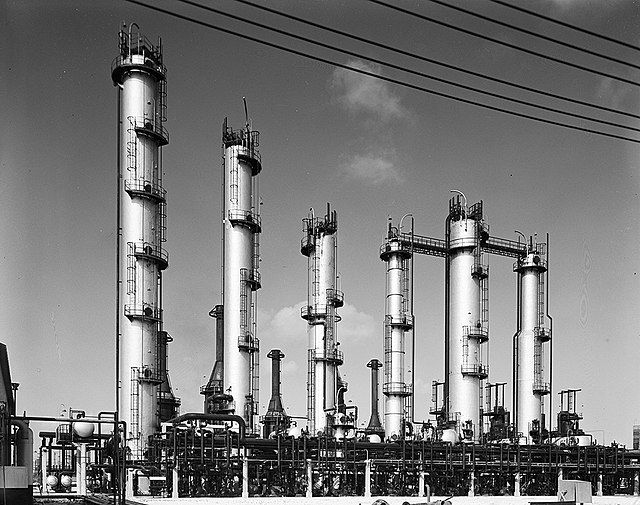The Limitations of Transnational Constructions of Contamination
- Ava Rawson
- Jun 5, 2022
- 3 min read
Introduction
Judicial inspections of sites of alleged crude oil contamination in the Ecuadorian Amazon were conducted between 2004 and 2007 as part of a civil suit. First filed against Texaco Inc. in 1997, in Aguinda versus Texaco Inc., this suit was later inherited by Chevron after their merger in 2001. According to a third-party report of the environmental impacts of industrial activity between 1964 through 1990, Chevron-Texaco,
“regularly sprayed roads with crude oil for maintenance and dust control, and deliberately dumped tons of toxic drilling and maintenance wastes, in addition to an estimated 19.3 billion gallons of oil field brine into the environment without treatment or monitoring — contaminating countless rivers and streams that served as rich fisheries and water sources for local communities.”
Non-renewable resources were also flared, polluting the rain and air quality, and carcinogenic chemicals used in the extraction process were discarded and entered into the water cycle, along with heavy metals which bioaccumulated within the food chain. Below is a short overview of the legal proceedings of the “largest act of systemic and chronic environmental pollution ever committed”:
1993-2001: United States-based Class Action Lawsuit in which Texaco was ordered to pay US$ 40 million
2003-2006: Refiling of the case in Lago Agrio, Ecuador
2008-2011: Chevron ordered to pay US$ 9.5 billion in compensation: US$ 8,646,160,000 for remedial measures and US$ 8,646,160,000 in punitive damages if the company did not apologize to the Afectados within fifteen days (which it has not). The court also awarded an additional ten percent of the “amount sentenced” to Amazon Defense Front
2018: The Hague ruled in favor of Chevron - it held the 2011 Lago Agrio judgment to be unenforceable due to “egregious fraud and corruption by the plaintiffs’ legal team”
The question here is not whether the rulings made by the US Court, the Ecuadorian Court and The Hague are legitimate, ethical or morally just, but rather how conceptions and differing definitions of what constitutes "contamination" within this context informed both sides of the debate and preempted each varying outcome.
Conceptualisation of Contamination
Constructions of contamination were most pivotal in the proceedings of the 2011 ruling in Lago Agrio, where the defendants and plaintiffs each produced a scientific report, not on the presence of the crude oil spilled as a result of Texaco’s extractive activities between 1964 through 1990 but the relative toxicity of such contamination and whether that warranted compensation. Each report supported opposing claims; the plaintiffs’ report claimed that the pollution of the soil presented a threat to the health and wellbeing of the local population while the defendants report claimed that the pollution contained “no oil-related risk to public health or the environment.”
Despite the different conclusions, each side took samples from the same locations and gathered similar analytical data from the soil and water samples. The laboratory data from both the plaintiff and the defendant showed “levels of total petroleum hydrocarbon (TPH)…exceed Ecuadorian standards (by tens to hundreds of times) in 97 percent of the sites examined during the judicial inspection”. I
t was the socio-material construction of what warranted toxicity within this context that allowed for the different conclusions to be drawn from either side. There were disagreements over what chemicals should be tested for, how they should be assessed and what could reasonably be considered their effects, meaning that the different analytical frameworks utilised could bear dramatically different results. For example:
“North American scientific wisdom contends that a TPH measurement does not determine risk. Being a gross assessment, a TPH value does not proffer any meaningful information on the multiple chemical compounds within that measure. Nor does it offer insight into how chemical components have in the past or will in the future interact with each other or the medium in which they exist—both key concerns in understanding toxicity.”
Different cultural contexts affect the analytical frameworks utilised when determining toxicity, in addition to the motivations of the stakeholders within the context of the case. Tension was created within point instances as transnational corporations had a wide variety of analytical and cultural frameworks from which to draw to further their case, even as these proved asynchronous with the dominant ideological framework of the region in which they are operating.
Conclusion
The reports and subsequent court rulings never questioned whether or not Texaco dumped 16 billion gallons of formation waters into the environment, burned 230 million cubic feet of natural gas and dumped heavy oil into open waste pits. This disparity in rulings can be attributed to the (perfectly legal) manipulation of scientific data in order to construct and project beneficial understandings of what contamination actually constitutes. While discourse relating to this case can ebb into metaphysical debates over corporate sovereignty and the expansive domination of corporations as anchorless embodied entities with a globalised extractive economy, the primary implications of this case are extremely silent in regard to delegating accountability amongst multinational corporations in resource extraction contexts.



